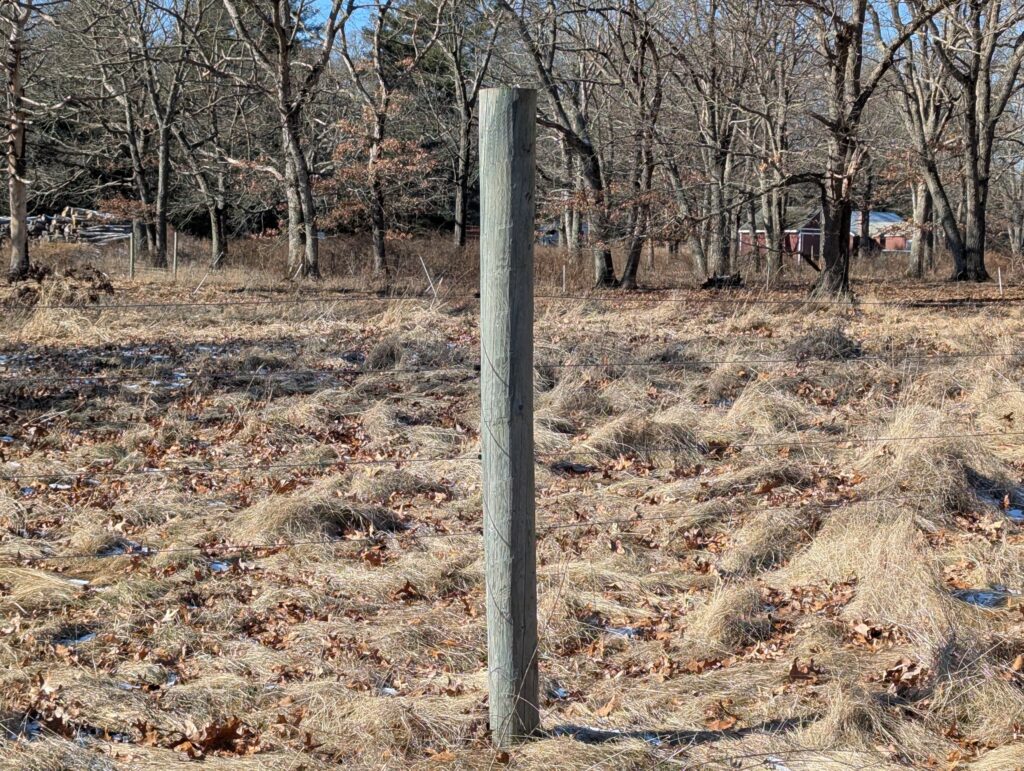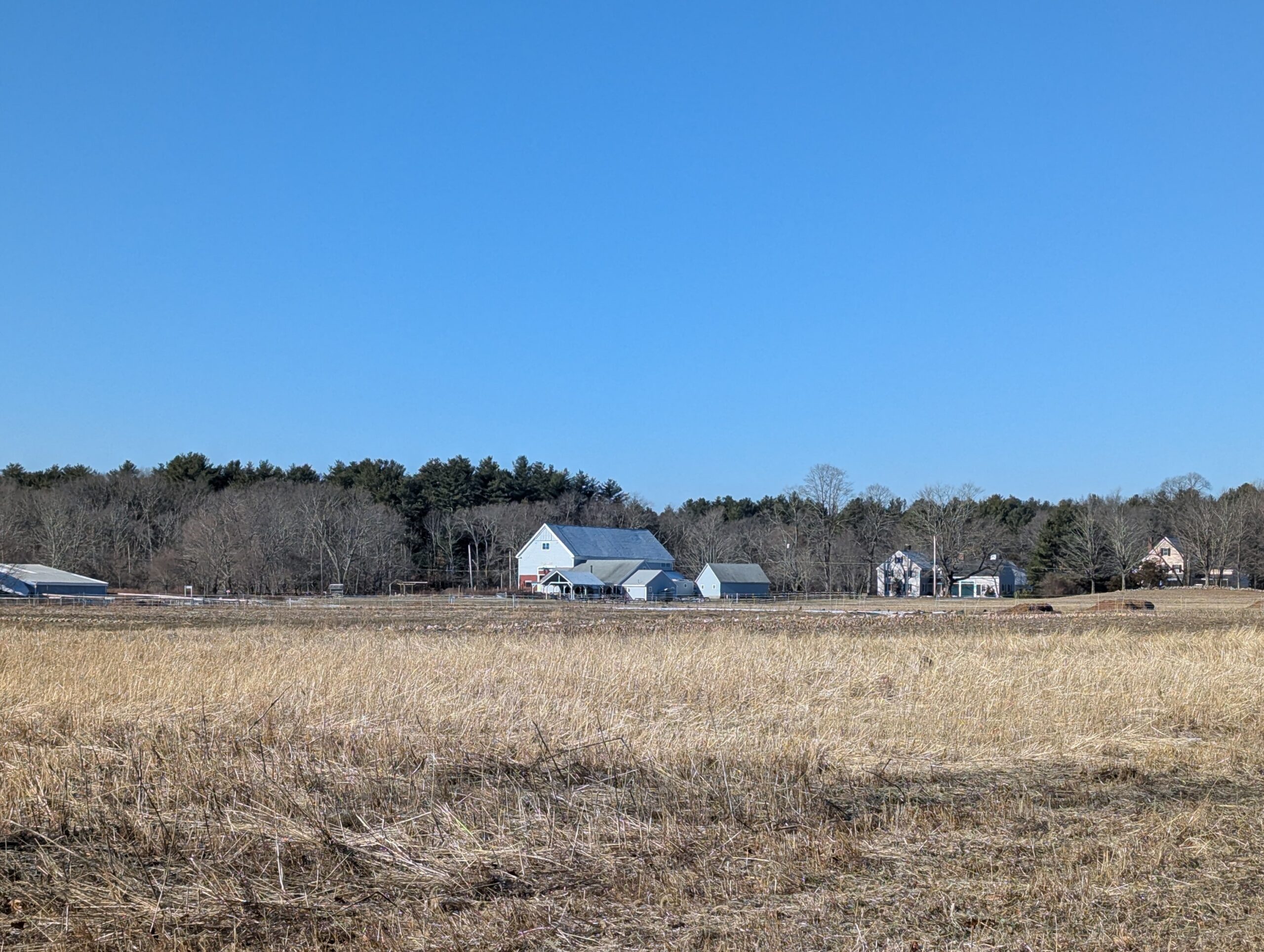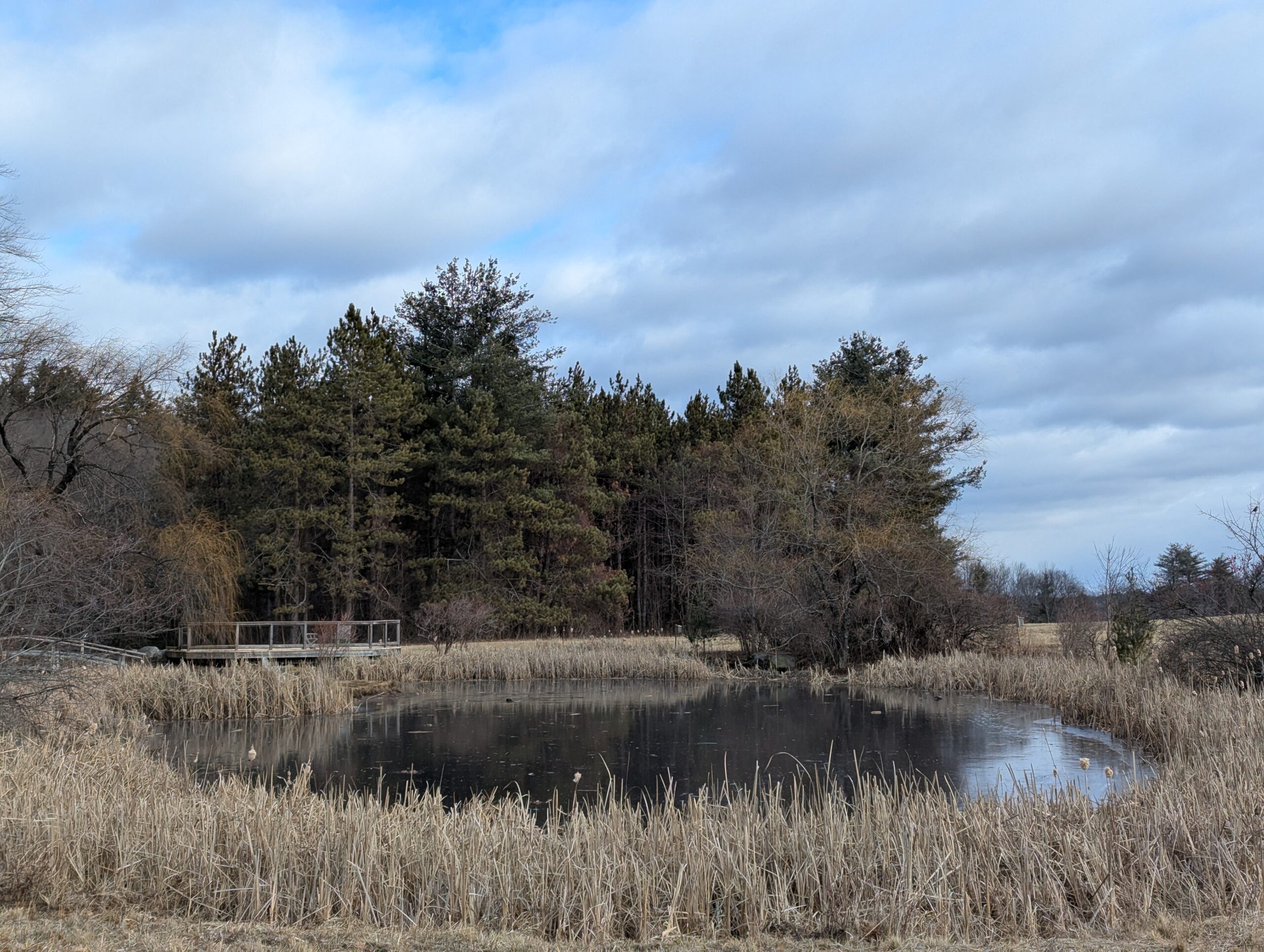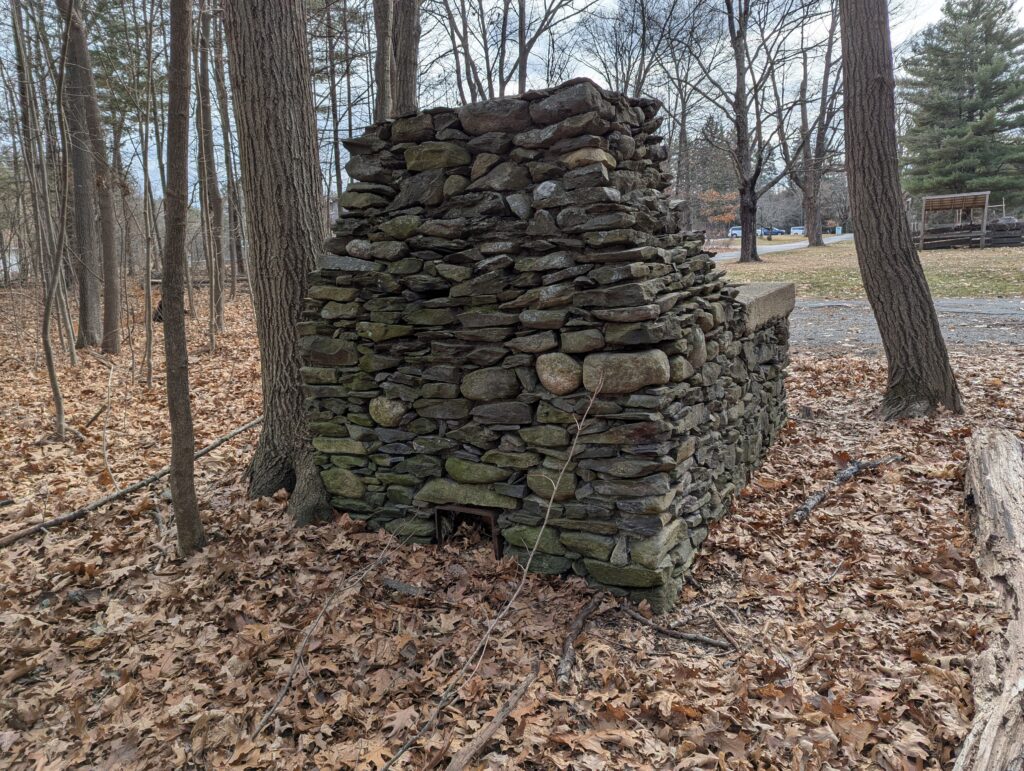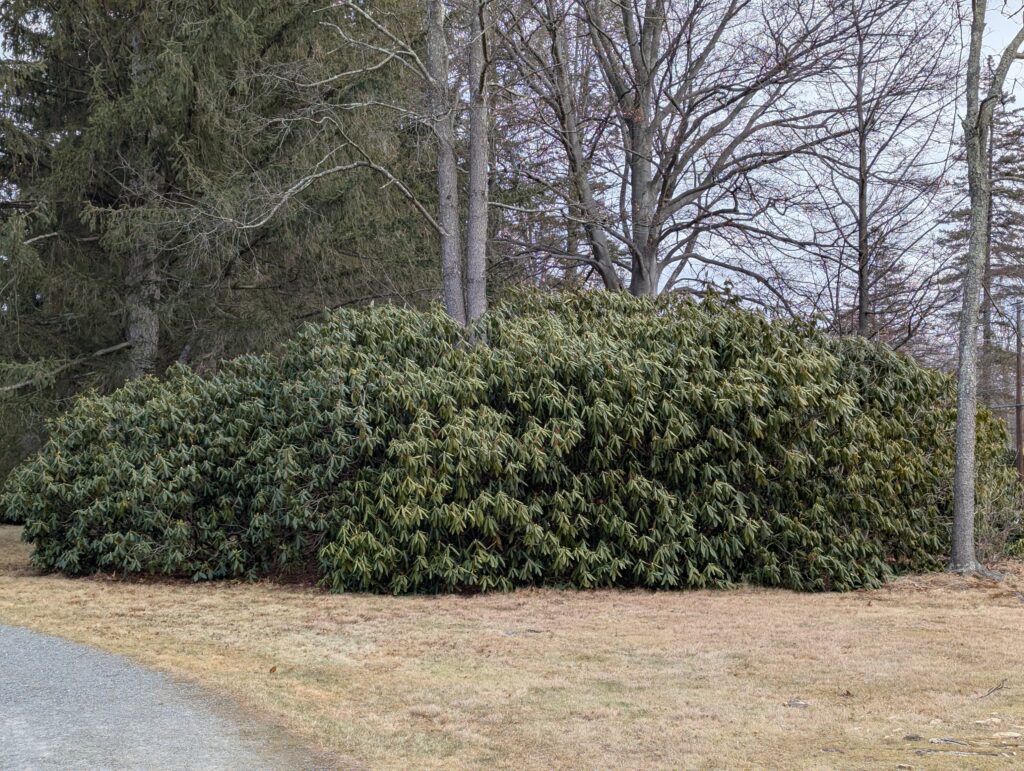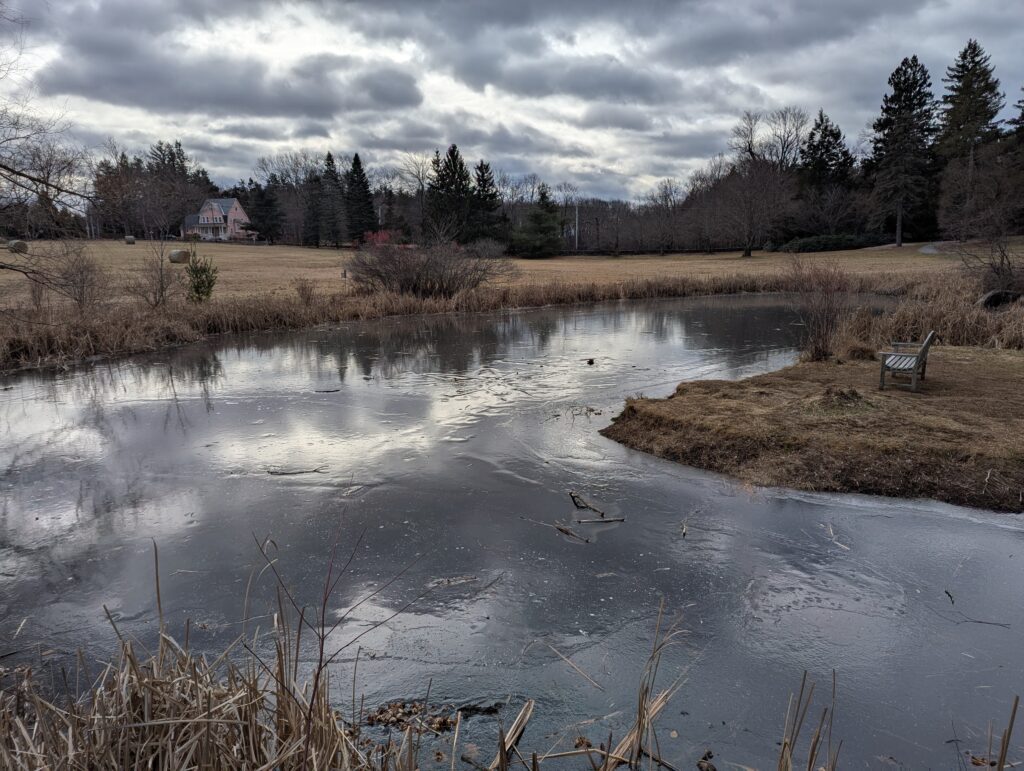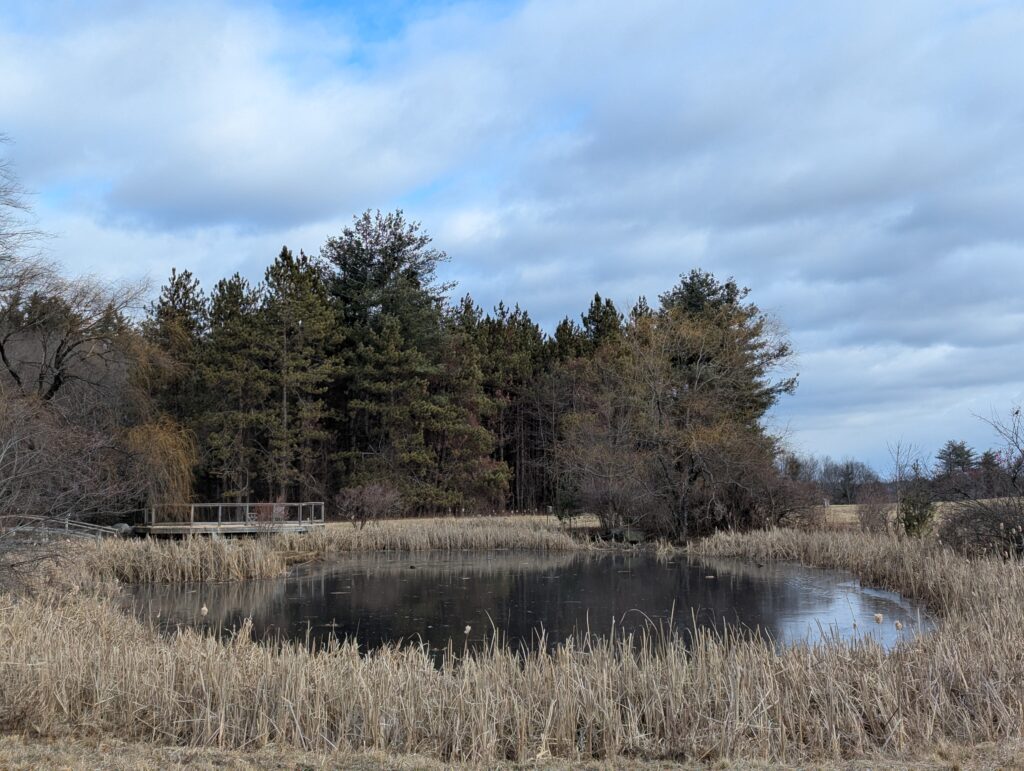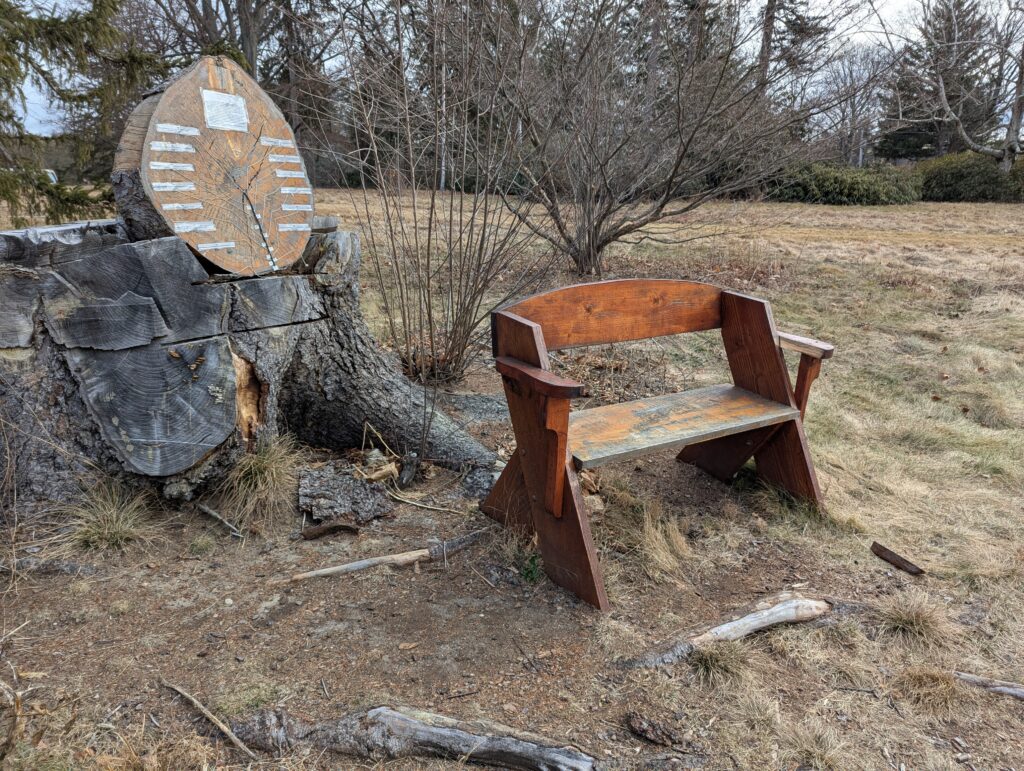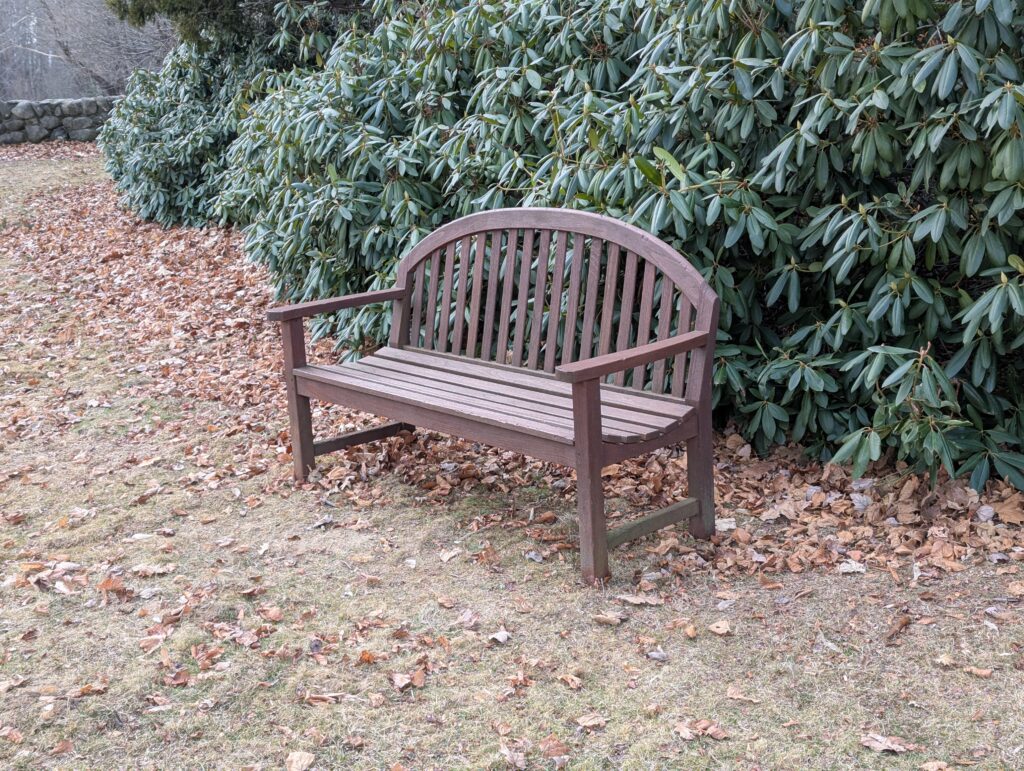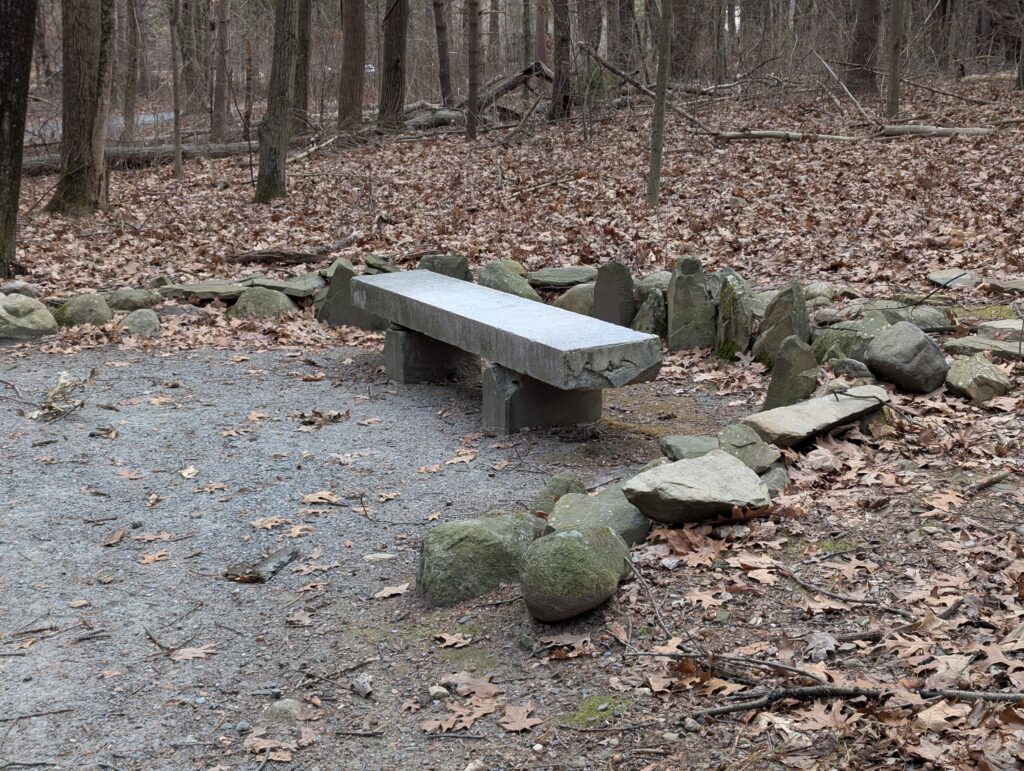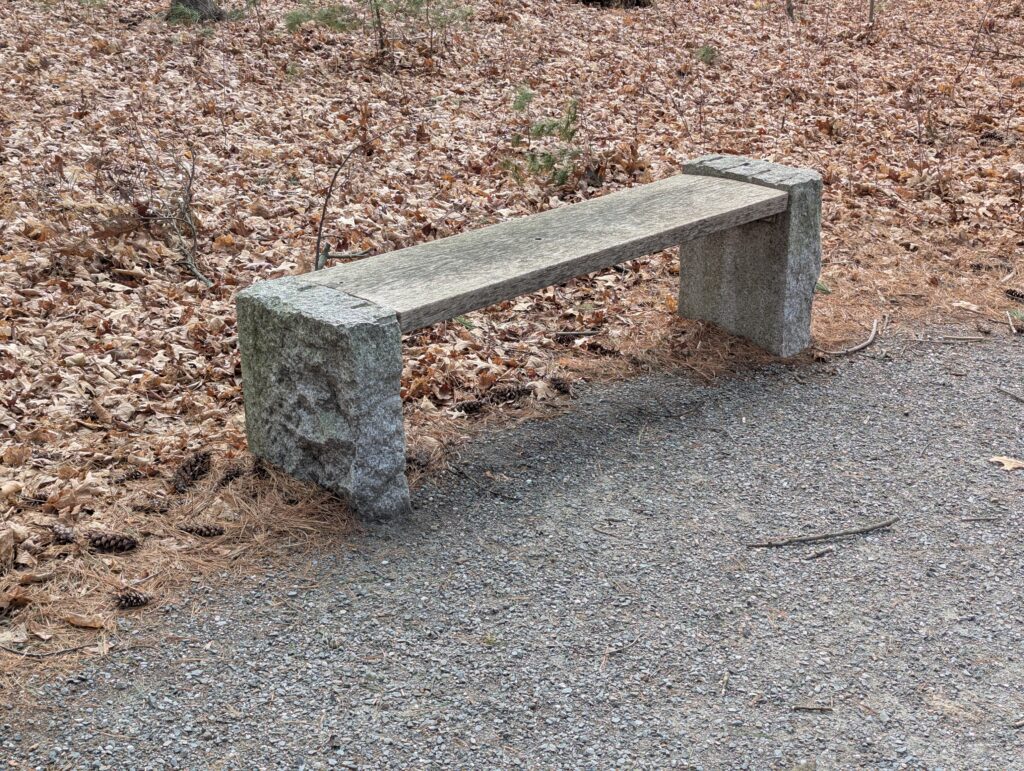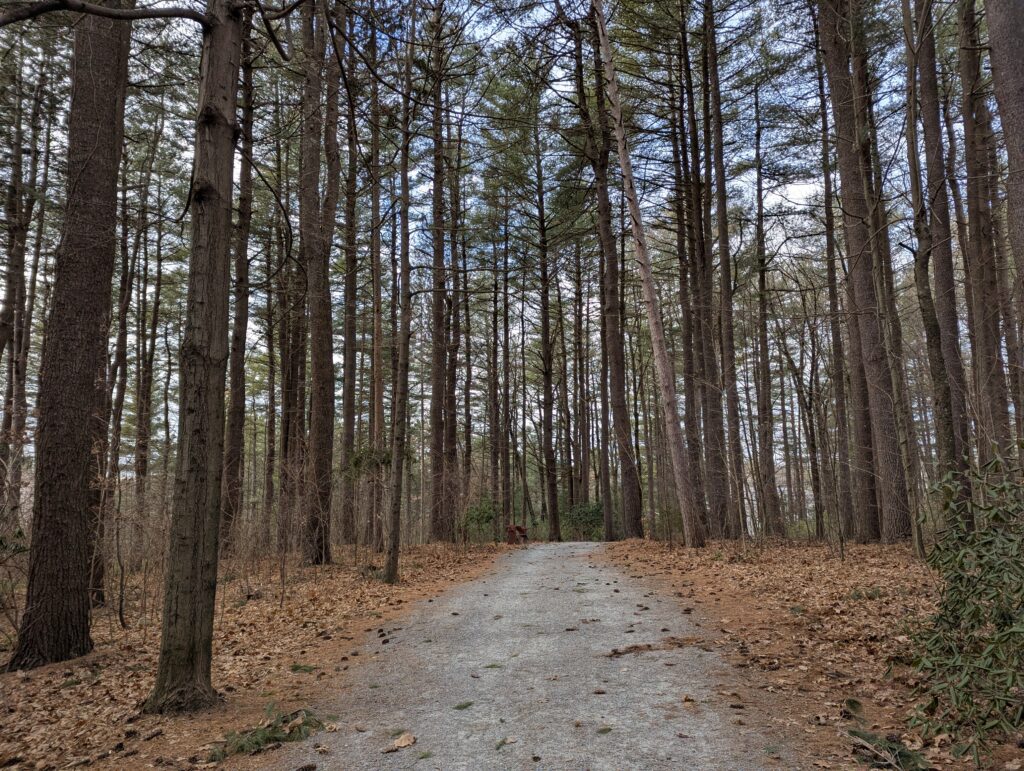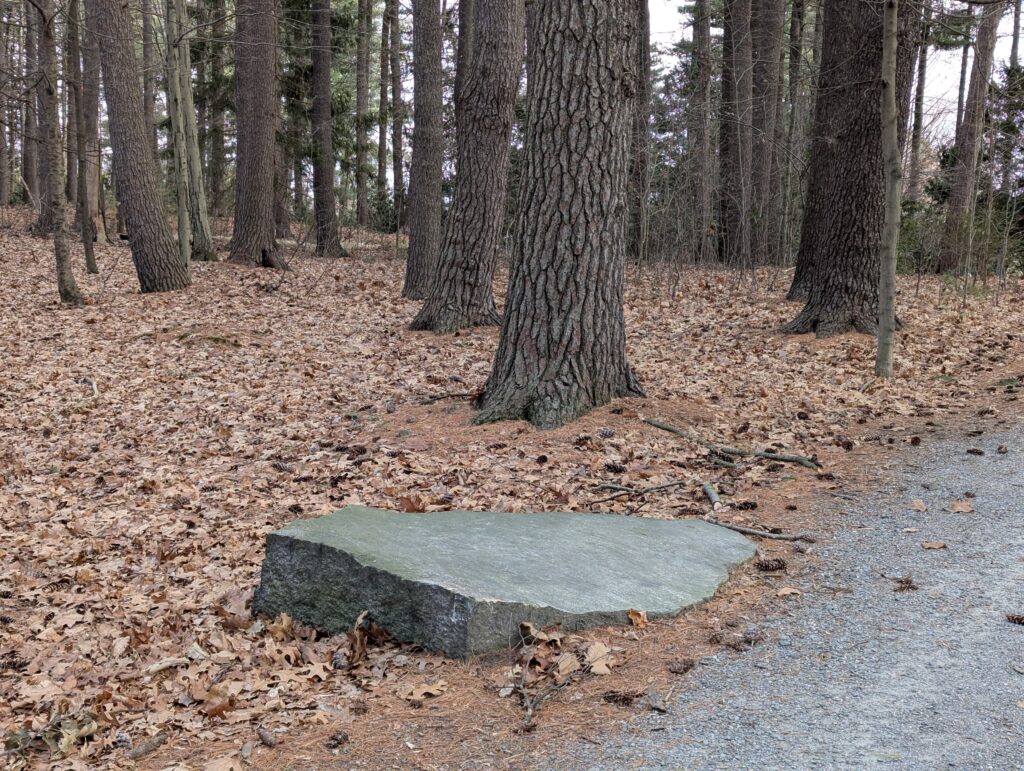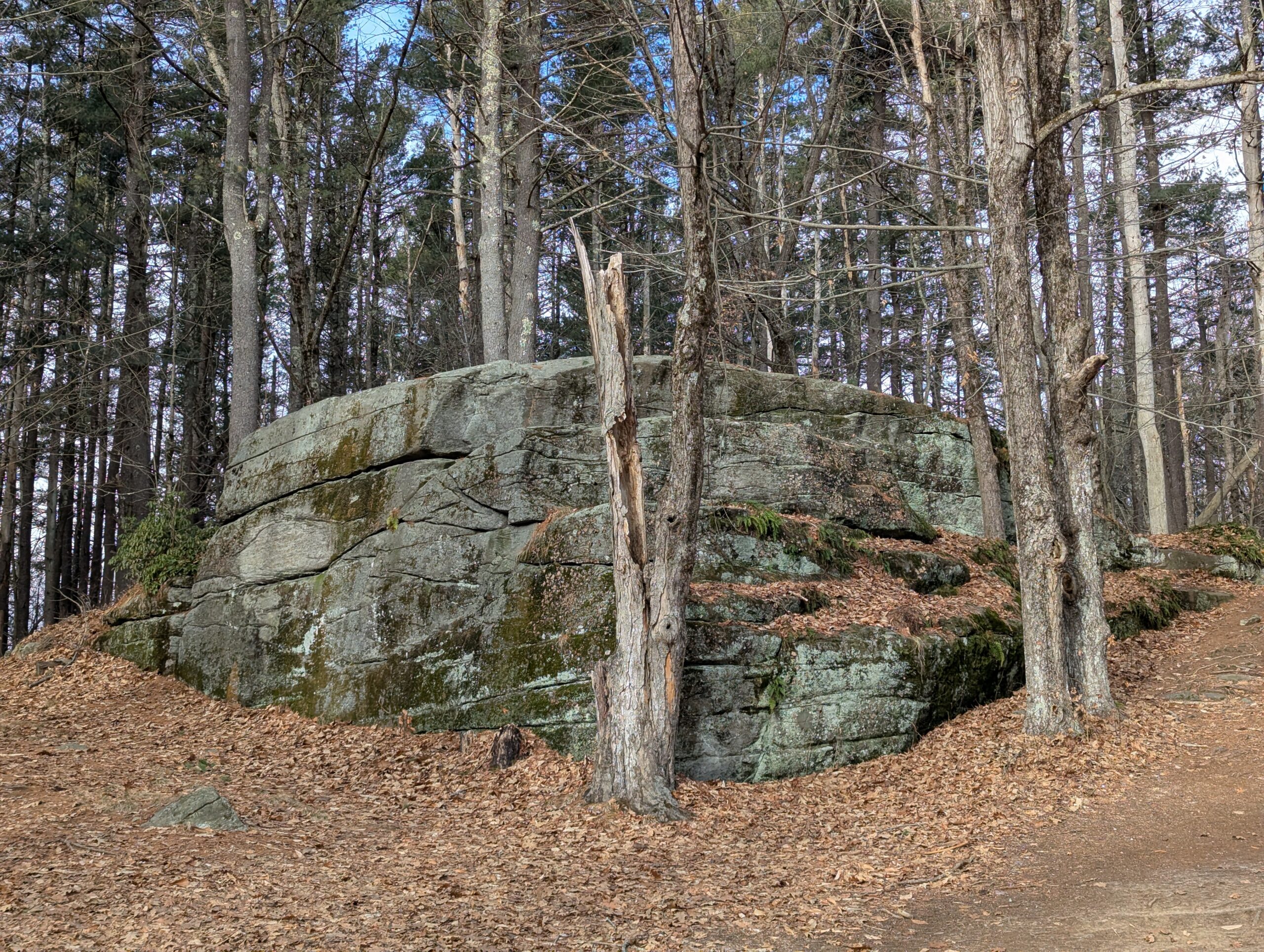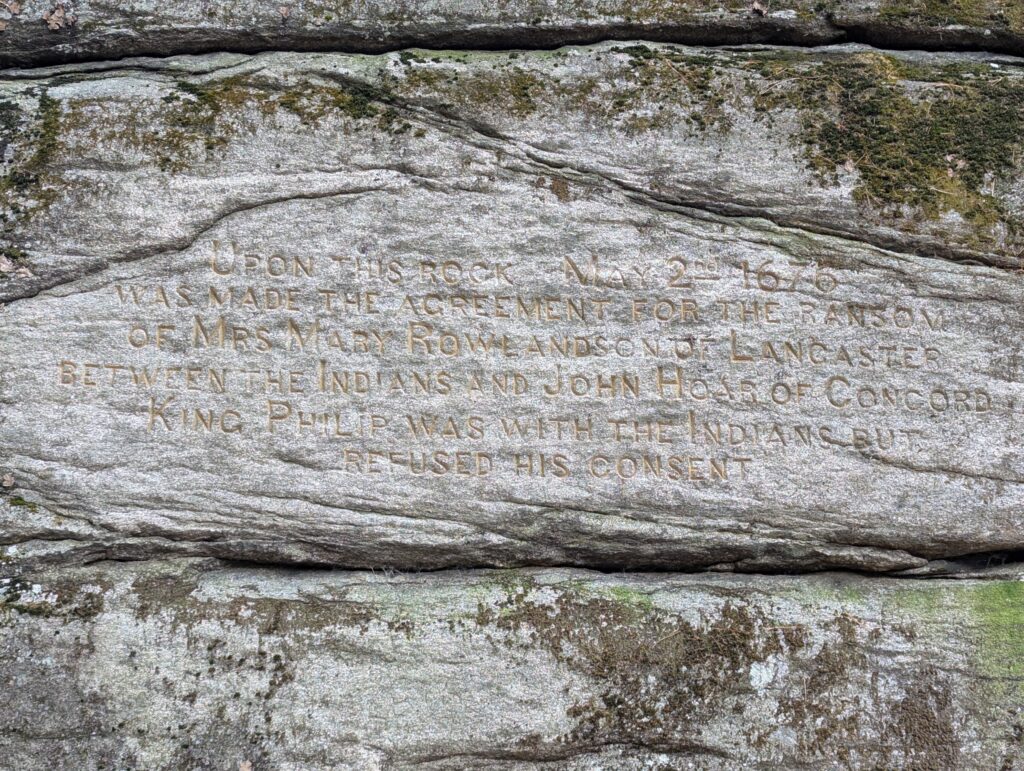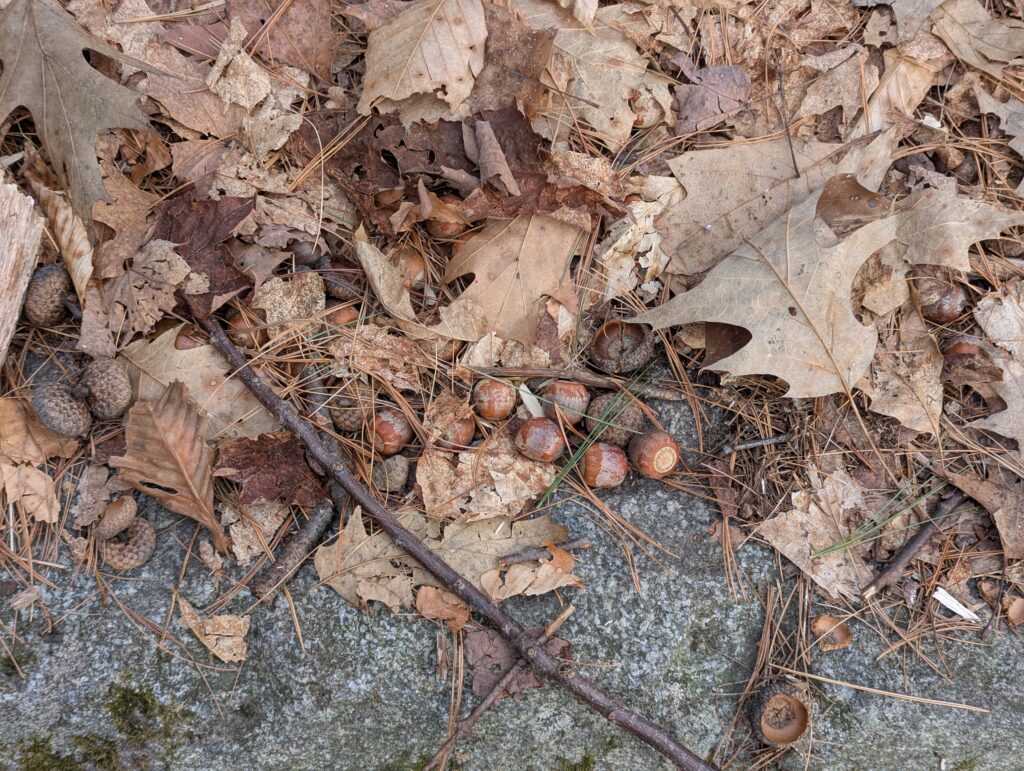| Size | 109 acres |
| Trails | 2 (Meadow Loop and Knoll Trail), plus connectors to Hale Reservation and town conservation trails |
| Parking | Paved lot |
| Toilet facilities | Yes! And boy are they cold in winter! |
| Town | Dover |
| Trustees Region | Metro West |
| Notable Item | Farm stand |
The Background
This spot has been used for agriculture for over 300 years. In the decades leading up to 1930, it was a horse farm. Amelia Peabody, a notable sculptor, purchased a house nearby in 1923, bought the farm (in the literal sense) in 1930, and then began buying more land, which would become a number of Trustees properties. Peabody had a herd of Yorkshire hogs on the property as well as at least five Hereford cows, some of which were prize winners. (Peabody also built one of the country’s first solar-powered houses nearby.) After Peabody’s figuratively bought the farm in 1984, The Trustees purchased Powisset Farm in 1985.
Peabody was an extremely wealthy woman who gave over $8 million to charity during her lifetime, and the Amelia Peabody Charitable Fund has given away nearly $220 million since her death. If you want to learn more about Amelia Peabody, the Massachusetts Historical Society has a substantial collection of papers and photographs.
Our Visit
We set out to explore on Friday, January 17 because the weather was relatively good, and because rain was forecast for Saturday and snow for Sunday. We wanted to go somewhere that didn’t get too much snow in the storm earlier that week, and somewhere that would allow us to get back to work in the afternoon, and Dover fit the bill. (One great thing about being a freelancer: you can take a couple of hours off during good weather and make up for it by working during bad weather.)
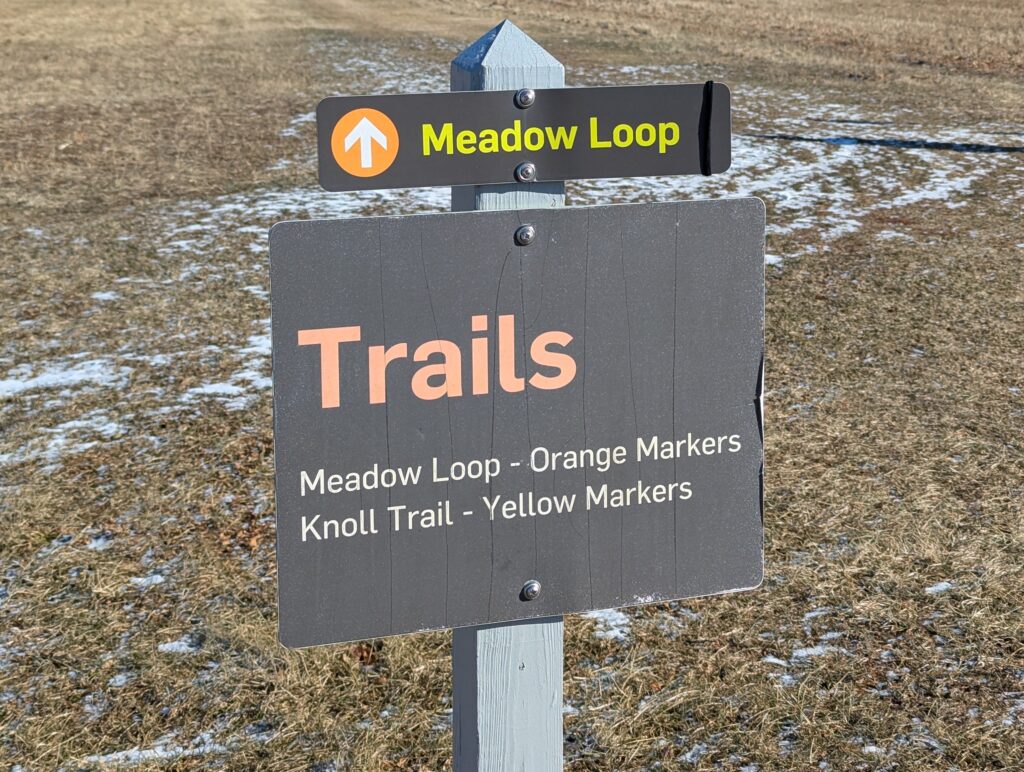
The farm has one main trail: the Meadow Loop, which skirts the perimeter of the farm fields and edges on to some more wild areas. The trail is largely flat and suitable for children. So suitable, in fact, that as you walk around the property you can read a children’s book. Stands along the trail each hold two facing pages of the story, although most were covered with a touch of snow when we arrived.
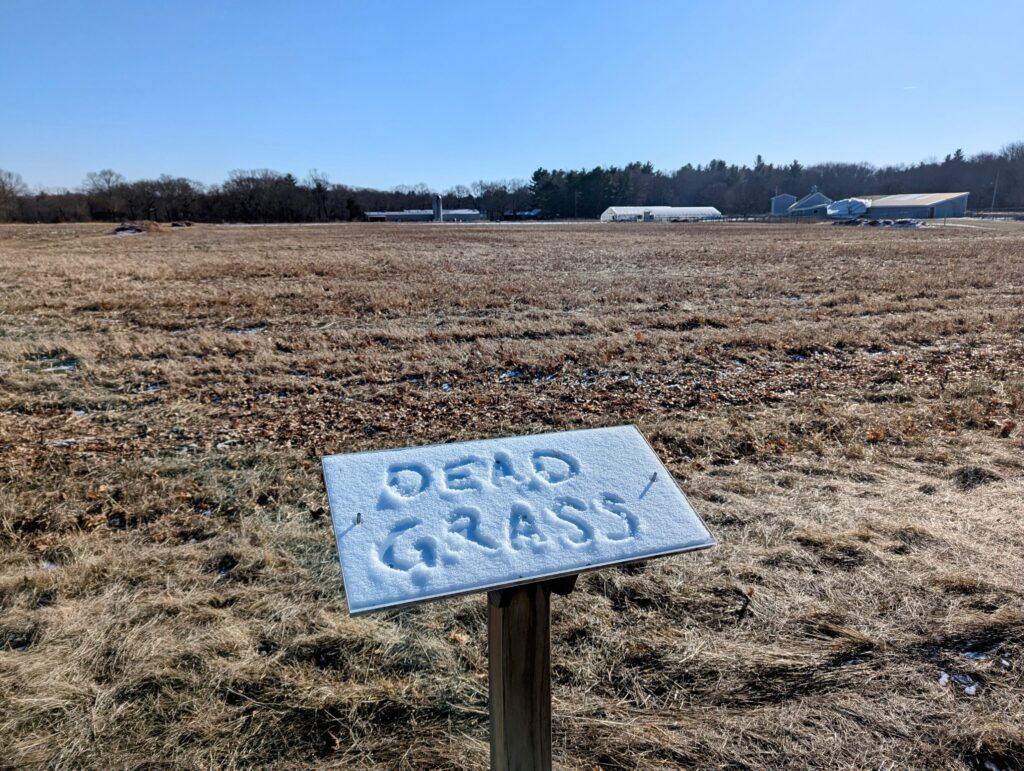
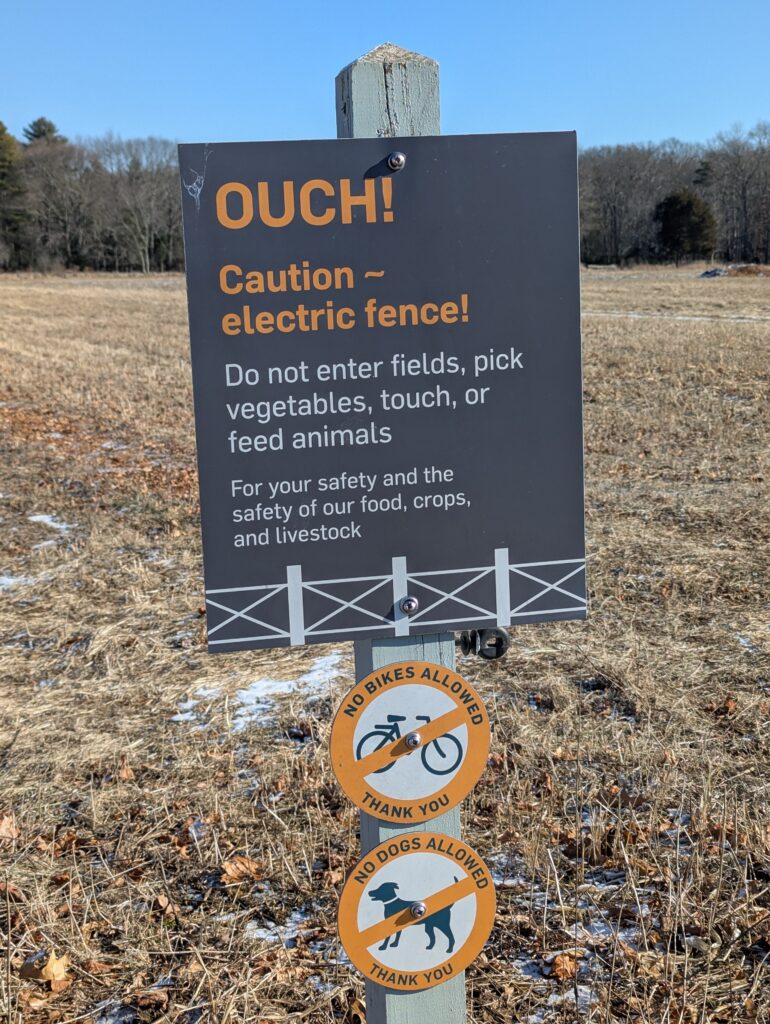
In the growing season, the fields are protected by an electric fence. However, the majority of the fence was down when we visited.
The first part of the Meadow Loop skirts the fields closest to Powissett Street, and feels the most developed. In winter, you can see into the neighbors’ yards as you walk. But soon, the trail reaches an area that is more sheltered and wild. But not too wild. It even has some cute primitive wooden deer hanging around, wearing jaunty hats.
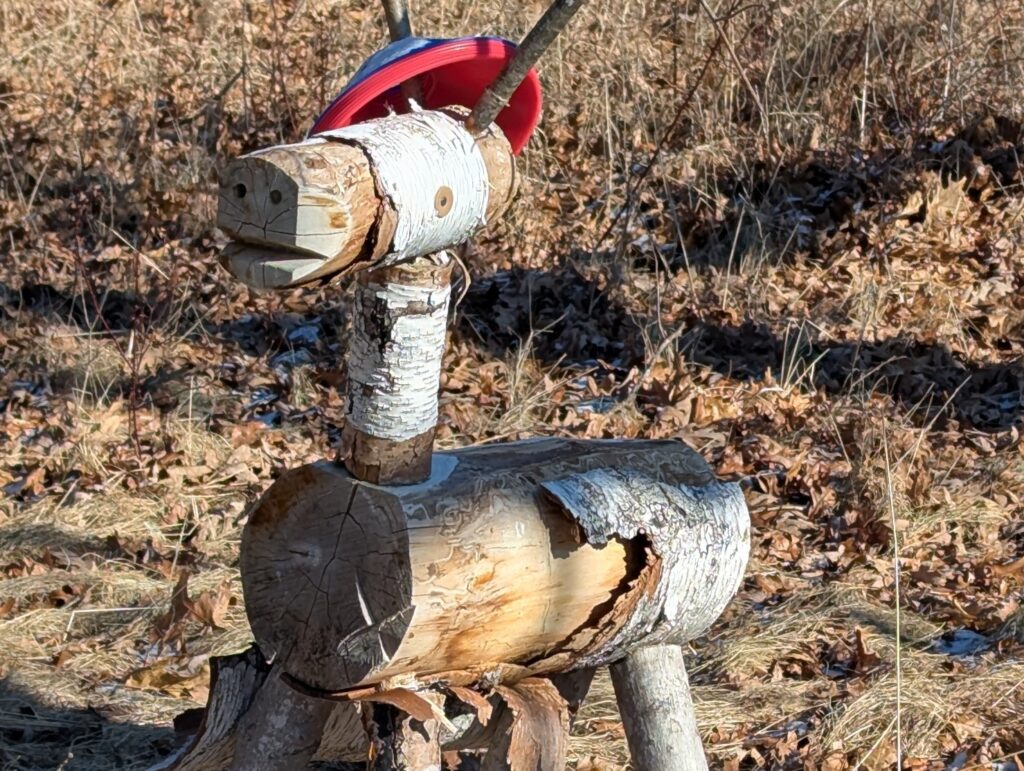
If you wanted to go birding in winter, this might be a good place. But bring binoculars and/or a zoom lens! The birds at Powisset Farm were much more skittish than our city birds, and never let us get close enough to get a good photo. Behold below: Mike’s best bird shot of the day. See that really tiny light spot to the right of the tree trunk in the grass? That is a bird. If you click to get the largest version of the image, you can zoom in and get a better view of…a vaguely bird-shaped light spot.
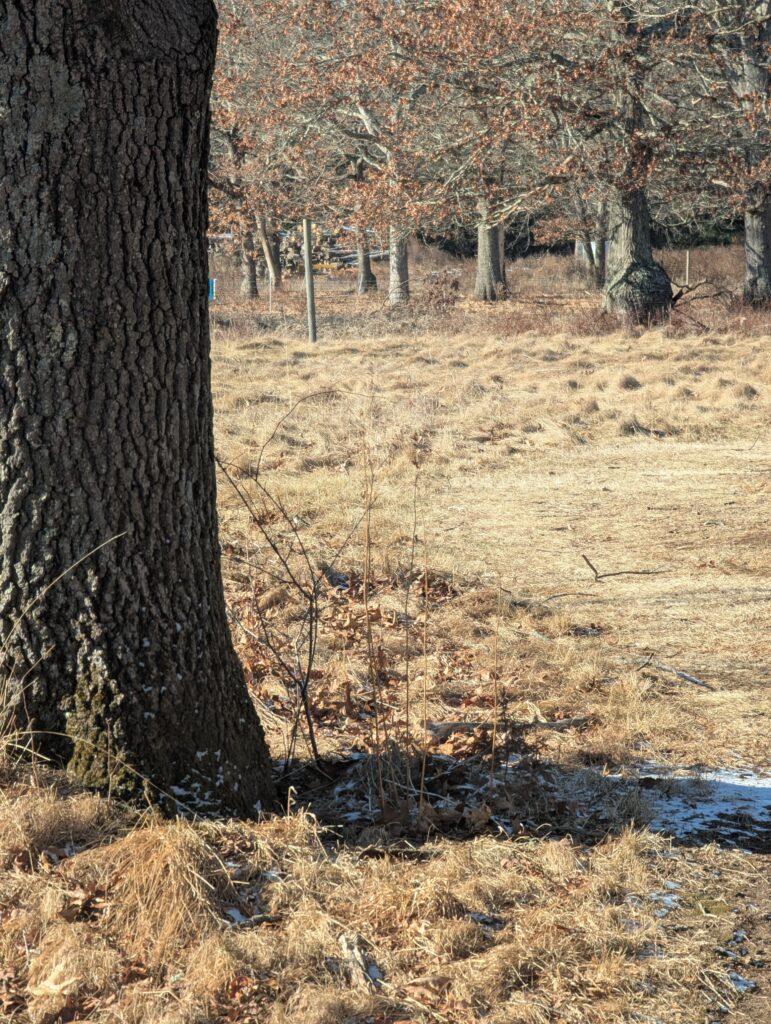
There are several more reasons this is a good spot for kids. For example, the bathrooms. They exist! And they’re accessible! Kids often need bathrooms, and those of us who subsist largely on coffee do too, so it was a delight to find them. The women’s room was so cold when I went in that it brought me back to some of the more rugged bits of New Zealand that we stayed in. Mike said the men’s room had more heat.
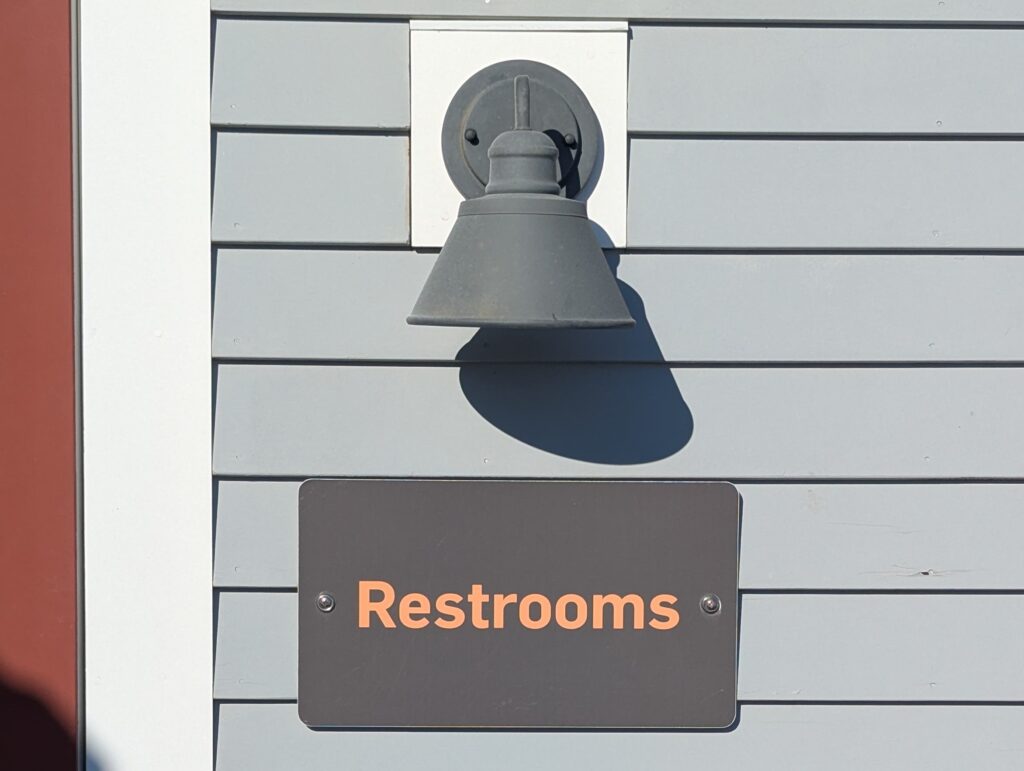
Another reason is the lovely farm stand, the Powisset Farm Store. It offers meat, eggs, organic produce, coffee, tea, pastries, fruit, and a number of other treats and gifts. It also has some bougie canned beverages such as mocktails (they were tasty). They also offer heaps of cooking classes that sell out quickly, and if only we lived closer we would take advantage of them. And they also offer a highly in-demand CSA, which has a blog with heaps of recipes!
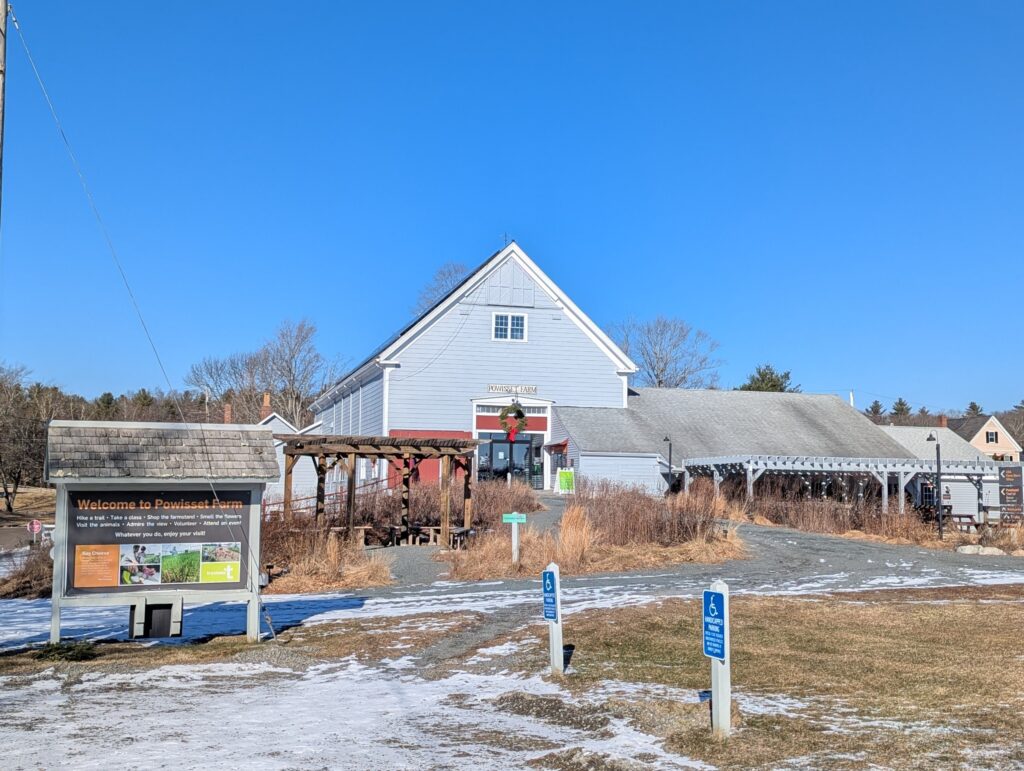
The farm also plays host to an annual foxhunt (really more of a riding activity; no foxes are killed during the hunt).
Powisset Farm is also extremely convenient to other Trustees properties if you want to get a day of exploring in. It is across the street from Noanet Woodlands (which we also explored…post coming soon!) and down the road from Pegan Hill and Peters Reservation.
We hope you enjoyed our post!
